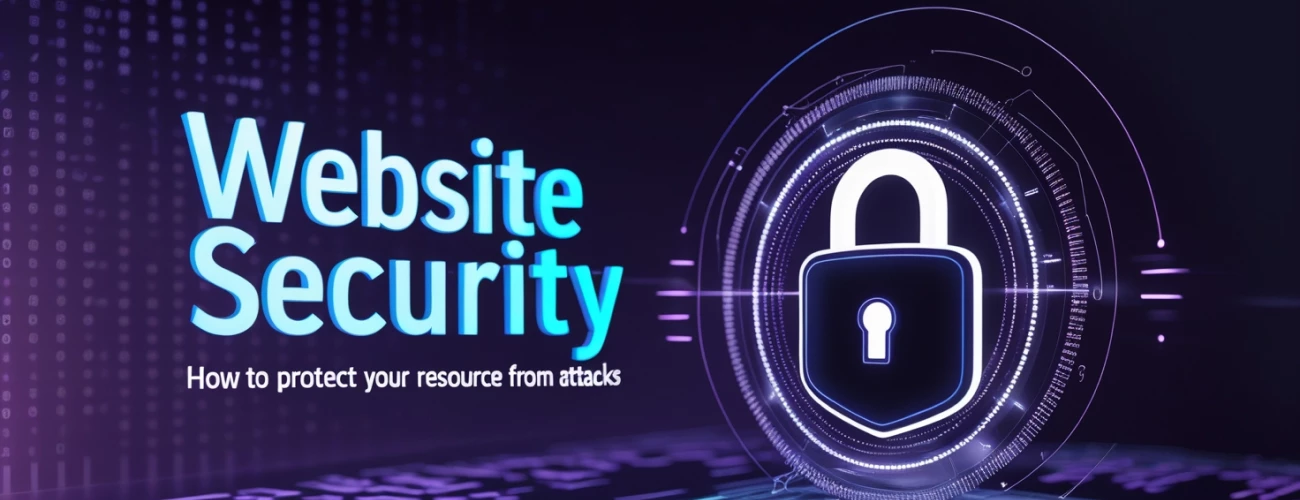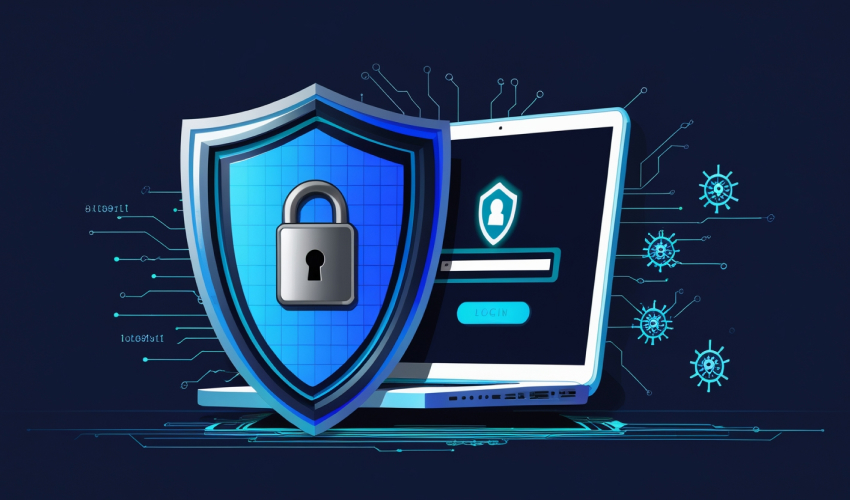Website security - how to protect your resource from attacks

A website is not just an addition, but a full-fledged tool for doing business — it is where sales take place, data is stored, and customer trust is built. At the same time, if the resource is not protected, fraudsters can use bots, malware, vulnerabilities, and deception to hack and steal confidential information, spread malicious files, and so on. We will tell you how to protect your website below.
Why website security is important
Reliable protection of data from cyber threats allows you to:
- protect information from theft, preserving your brand's reputation;
- prevent financial losses;
- prevent your website from being taken down;
- avoid being blacklisted by search engines, which pay attention to website security and, if they detect problems, lower its ranking or exclude it from search results altogether;
- prevent the resource from being used in criminal schemes.
Main security threats
Malware, DDoS attacks, and SQL injections are the main threats faced by resources.
Viruses and malware
Viruses on websites, Trojans, spyware, and ransomware are classic tools used by fraudsters. By infiltrating the server or administrator's workstation, they can:
- encrypt or delete files, making the resource inaccessible;
- steal credentials;
- give the attacker complete control over the portal;
- spread across the company's internal network, infecting new nodes.
Protection against malware is provided by antivirus scanners at the hosting level. It is also worth restricting user and program access to system functions.
DDoS attacks
The goal of a DDoS attack is to disable a server or communication channel by flooding it with an excessive flow of requests, causing regular users to receive errors or simply be unable to access the site. Typical types of DDoS attacks:
- massive HTTP(S) requests from bots;
- channel overload with excess data (network flooding);
- “amplification,” when third-party servers flood the resource with an amplified traffic flow.
Classic protection against DDoS attacks includes limits and captchas for suspicious requests. You can also use a CDN with traffic absorption capabilities and configure a web application firewall.
SQL injections
This is one of the most dangerous types of cyberattacks. An attacker inserts parts of an SQL query into input fields, which disrupts the logic of the website. Thus, SQL injections lead to massive leaks of personal information and the alteration or deletion of the entire database. Fraudsters can also easily bypass authorization and gain access to the admin panel. Therefore, special attention must be paid to preventing SQL injections.

Security measures
To protect your website from hacking, data leaks, and crashes, it is important not only to understand the threats, but also to take specific measures. Below are three basic but effective steps you can take.
Install an SSL certificate
SSL is encryption of data transmitted between the portal and the user. This allows you to:
- protect information from interception;
- use the secure https:// protocol;
- increase customer confidence, as browsers mark sites without SSL as “unsafe”;
- improve search engine rankings (Google takes HTTPS into account).
Conveniently, SSL can be obtained free of charge through special services.
Regular updates of CMS and plugins
If the resource runs on CMS (WordPress, Joomla, OpenCart), this means that its core and extensions are regularly updated by developers to close vulnerabilities for hackers. Therefore, you should periodically check and agree to CMS updates. Even better, set this option to automatic. This will not only increase protection, but also the security of plugins and system functionality.
Data backup
Even if a resource is well protected, no one is immune to hacking, hosting failures, or human error. Therefore, it is imperative to set up automatic website backups, which will be stored on another server or in the cloud. This will allow you to prevent the loss of valuable information and restore data after a cyberattack or technical failure.
Recommendations for protecting your website
Reliable protection starts with simple but effective steps. Below are some website security tips that can help reduce the risk of hacking and information theft:
- install and configure an SSL certificate to encrypt data between the user and the resource;
- keep an eye on updates for the platform your portal runs on;
- back up your site and database so you can quickly recover after a failure;
- use strong passwords and change them regularly. Two-factor authentication is a good idea for the admin panel;
- restrict access rights for users, programs, and processes;
- set up a web application firewall (WAF) to filter malicious traffic and block attacks;
- protect forms from SQL injections and XSS attacks by checking and cleaning data;
- delete or disable unused modules and scripts.
To learn more about website security in Ukraine, contact the IT company Megasite. We have been developing websites for over 10 years and actively implement best security practices. To learn more about our services and prices, call us at +38 (050) 3986 274.
Your project
Call/write:


